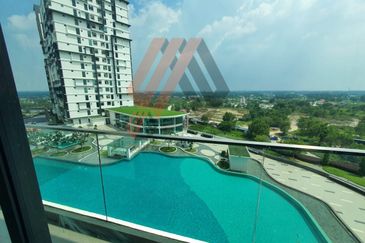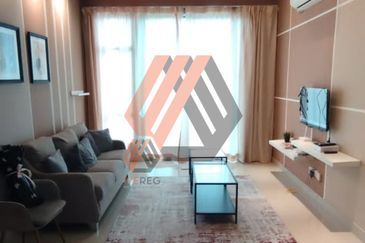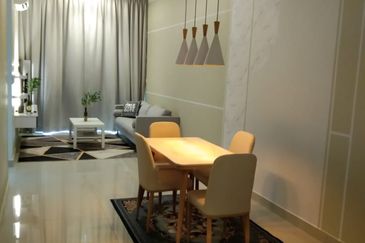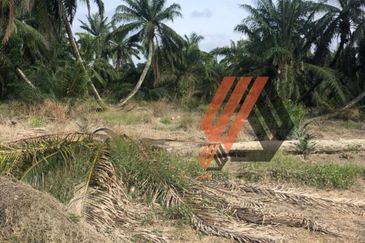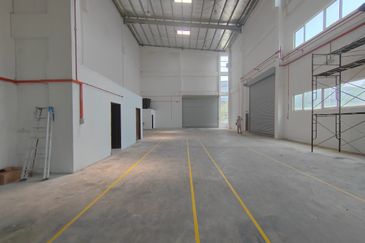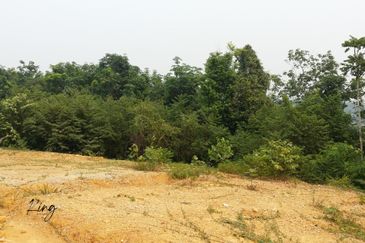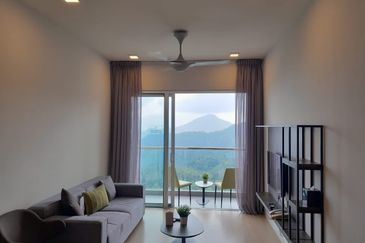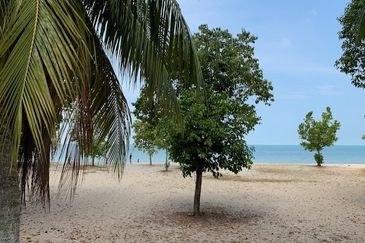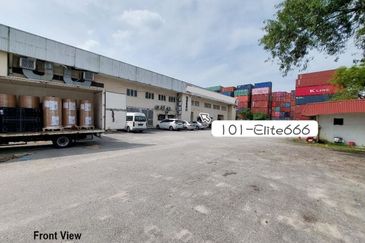Some optimism is returning to the Johor Baru housing property market after two consecutive sluggish quarters as a result of the global credit crunch.
There were more sales recorded in the primary market in 2Q2009 compared with 1Q2009, says KGV-Lambert Smith Hampton Johor director Samuel Tan when presenting The Edge/KGV-Lambert Smith Hampton Johor Baru housing property monitor for 2Q2009. Despite the spike in sales, he says the property market in JB will remain challenging in the next two quarters depending on economic conditions then.
“If the economy moves upward, the property market will follow in tandem, after a lagging period of about six months to one year,” he adds. Hence, prices and rent will likely maintain their current levels even if the economy picks up soon.
Tan says that recovery is relatively slow. “But certainly, the concerted efforts of the government pumping money into the economy, contributed to greater consumer confidence and this was reflected in the recent stock market rally. Furthermore, Bank Negara also maintained a low overnight policy rate (OPR), making borrowing costs very attractive. All these encouraged some purchasers to start committing to house buying in 2Q2009,” he says.
 However, Tan is uncertain about how much exactly sales have increased in 2Q2009. He also expects both local and foreign investors to start committing to investments only when the “dust settles”. Besides the rate of recovery of the world economy, foreign investments will also depend on, among others, promotional activities to attract foreign investors to invest in Iskandar Malaysia for example, he adds.
However, Tan is uncertain about how much exactly sales have increased in 2Q2009. He also expects both local and foreign investors to start committing to investments only when the “dust settles”. Besides the rate of recovery of the world economy, foreign investments will also depend on, among others, promotional activities to attract foreign investors to invest in Iskandar Malaysia for example, he adds.
Tan also notes that during 2Q2009, the first batch of civil servants has moved to Johor’s new administrative centre in Kota Iskandar. With other batches to follow soon, this will bring about a gradual demographical change in JB, he says.
“Developers may capitalise on this by building houses here to meet the needs of government servants. Others will also be seeking houses and accommodation here,” he adds.
Primary market
The primary market in JB has also seen an increase in new launches during 2Q2009, mainly in the Tebrau and Skudai/Nusajaya areas.
Along the Tebrau corridor, the Mayland Group launched serviced apartments (built-up: 484 sq ft to 1,097 sq ft) called the Palazio. Sited in the freehold Austin Boulevard within Taman Mount Austin, the selling prices range from RM116,000 to RM252,000.
Meanwhile, in late June, the S P Setia Group launched 140 units of 2-storey terraced houses (land area: 1,500 sq ft; built-up: 1,672 sq ft) in Taman Setia Tropika along the North-South Highway at the Kempas corridor, with prices from RM298,800.
Within Danga Bay, the Iskandar Waterfront Development Sdn Bhd unveiled its first serviced apartments known as Oakwood Service Residence, comprising two 40-storey towers, priced from RM400 psf. The serviced apartments for both towers will be equipped with kitchen facilities and broadband Internet connection, says Tan.
At Nusajaya and Skudai, the Mah Sing Group is offering three types of 2-storey terraced houses in Taman Sri Pulai Perdana 2 — 110 units of Type A (land area: 2,380 sq ft; built-up: 2,244 sq ft) from RM310,000 onwards, and 129 units of Type B (land area: 1,540 sq ft; built-up: 2,381 sq ft) and 110 units of Type C (land area: 1,820 sq ft; built-up: 2,597 sq ft) are priced from RM280,000 and RM260,000 respectively.
Several interesting trends can be observed from these launches, Tan notes. To begin with, the bulk comprises 2-storey terraced homes and cluster houses. Serviced apartments, mainly confined to city areas in the past, now seem to be acceptable among buyers even in prime suburban areas. Examples of such serviced apartment projects include the Palazio in Taman Mount Austin, Tebrau Residences in Taman Desa Tebrau and Prima Regency in Plentong.
Interestingly, in 2Q2009, Tan observes, developers’ prices have not gone down even during the current market slowdown, especially those in good locations. “Some even increased their prices. This is mainly due to high construction cost and the state housing regulations in Johor,” he reasons.
Other than that, he says the creative marketing techniques have also been widely adopted by developers, while the “deferred payment” method worked well for both developers and buyers.
“For the deferred payment method, developers managed to sell their properties while investors need not worry about their cash commitment until two years later,” says Tan, adding that the scheme will enable buyers to save on the interest payable during the construction period and enjoy possible capital appreciation.
Secondary market
The sub-sale market has been rather flat in terms of sales. “Enquiries, however, have increased among potential investors but most of them are either buying for their own stay or scouting for fire sales,” says Tan.
“The progress of some of the infrastructure works in Johor (allocated to Iskandar Malaysia as part of the 9th Malaysian Plan) will also bring about changes in purchasers’ demand.”
When buying houses, prospective purchasers should study the implications of ongoing and future infrastructure works as this may or may not benefit them, Tan advises.
“For example, the completion of interchanges at the Inner Ring Road-Jalan Yahya Awal and road widening along Jalan Skudai will make schemes towards the north of JB more appealing. The completion of the Eastern Dispersal Link (EDL) and the Southern Link to the east will make Bandar Baru Permas Jaya and houses along Pasir Gudang Highway more attractive in terms of property demand and values,” he adds.
Meanwhile, rent remains stable although there were more enquiries in 2Q2009 for rented properties, says Tan.
The business continues
Tan says JB has the earnest support of federal and state governments. “The Iskandar Malaysia blueprint must be carried out and this determination can be seen by the extra allocation given by the federal government through the stimulus packages. As a result, things are beginning to take shape. Iskandar Malaysia is a 25-year vision and we must be patient to see its realisation but the right steps must be taken now to ensure its success,” he adds.
However, many in the industry are hoping for changes to be made to the state’s policies with regards to low-cost housing, bumiputra housing quotas and measures to reduce the housing overhang.
“Uncertainties are not good for the industry,” says Tan.
This article appeared in City & Country, the property pullout of The Edge Malaysia, Issue 769, Aug 24-30, 2009.
TOP PICKS BY EDGEPROP

Twentyfive.7 Lucent Residences
Telok Panglima Garang, Selangor
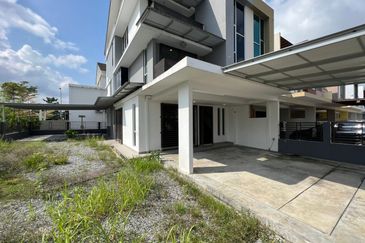
Bandar Botanic
Bandar Botanic/Bandar Bukit Tinggi, Selangor

One Cochrane Residences
Kampung Pandan, Kuala Lumpur

